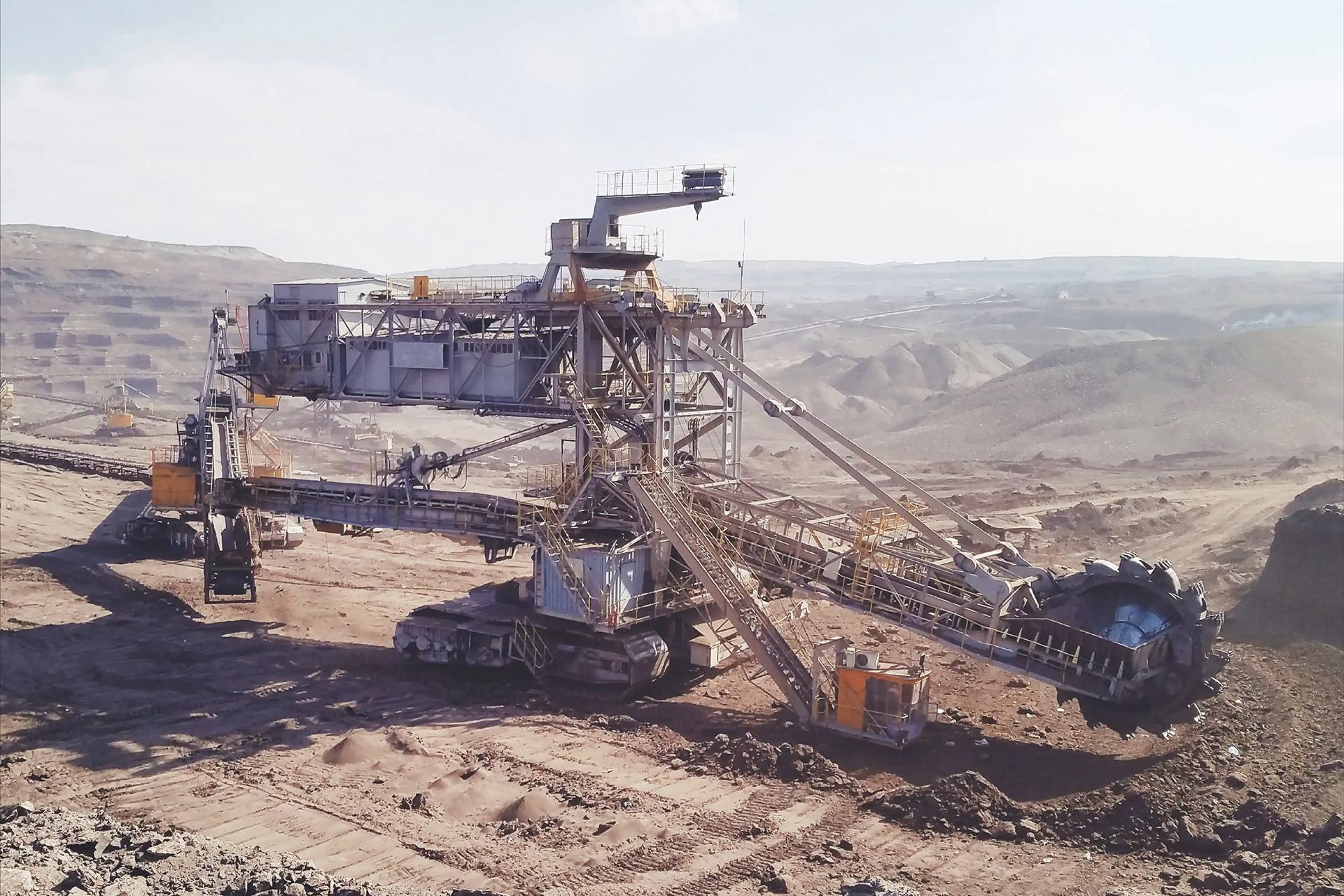Using sensor data to improve machine monitoring and maintenance scheduling. A unique project to modernise asset health monitoring systems for a leading Indian mining company. The goal was to customise solutions for the four different pain points, each adding benefits to the client’s operations.
Mining beneath the earth provides raw materials for most other industries. In fact, most internal parts of everyday electronics source raw materials from beneath the ground too; copper for circuitry, lithium for batteries, and so much more. However, the mining industry is also responsible for 10 percent of the world’s energy consumption.
Our client is the largest mining conglomerate in India, with operations in copper, zinc, iron ore and more across the country. As such, they understand just how much energy their machines and processes draw on a daily basis.
Pain Points
But with all of the energy usage that goes into ore processing comes a lot of heat, and consequently a lot of wear and tear. That’s why the client was looking for a way to optimise their monitoring systems at their iron ore plant in Goa. They were looking to lower their energy usage, pre-empt downtime, and conduct repairs as smoothly and safely as possible.
One glaring issue here, however, would thwart attempts to monitor any machine in the plant. Though the company had its fair share of sensors on the ground, these were all rigged up to a local DCS wired system. That meant data was only being monitored at a basic level, and none of it was being shared across operations.
Solutions
The first thing Ecolibrium did was to install SmartSense IoT-based sensor gateways and integrate them into the existing sensor network at the plant. The gateways were then rigged to funnel all the data gathered to a Central Historian, from where it’s sent to the cloud and processed by the SmartSense analytics platform. After that came the challenge of customising solutions for the four main pain points.
Turbine
It was established that the turbine had a heat rate far higher than it was originally designed for. The heat rate here is measured as a combination of factors, which when high enough can hamper the turbine’s normal working. In this case, Ecolibrium settled on real-time evaluation of the heat rate via two different methods, aided by the data constantly streaming in from the sensors, which measured in at 2,915 kcal/kWH against a design of 2498 kcal/kWH.
We then used this data to identify exactly which components were the biggest contributors to the rising heat rate. This would make fixes and replacements much easier to perform, and even daily manual adjustments far more accurate. As it turns out, at least 360kcal/kWh of the excess heat rate was being generated by back pressure, mostly due to air backwash and dirty feed tubes, which would be a much easier fix than anticipated.
Conveyer
The conveyor belt also needed to be tested for structural weaknesses so it could be fixed, and increase possible loading weights. To do this, we measured percentage loads travelling on the conveyor while also gathering vibration and noise data, as well as information about how fast it could accelerate and move.
Allowing maintenance to plan downtime and execute repairs allows the conveyor to operate at peak performance, with throughput increasing by a significant 3.5 percent. That translates to about a 9,000-million-ton increase in production each year, as well as a reduction in the conveyor’s water consumption directly proportional to decreased unload times.
Head Electrostatic Precipitator (HESP)
Given the nature of its functioning, the HESP is somewhat prone to fire incidents that both temporarily shut down operations, and can be potentially deadly to workers. The client had reported two such incidents in just 2020. In order to pre-empt these incidents, Ecolibrium began performing real-time evaluations of the temperatures, oxygen levels, dust concentrations, and other factors.
Through SmartSense, this would allow the company to have insight into when risk factors for a fire are high, and give them critical alerts in case of an incident. Not only would this help keep workers safe and avoid production losses, it would also aid in keeping the machinery in a well-maintained state.
Bell Less Top (BLT)
Our client was also looking to reduce downtime on their Bell Less Top and be able to track its health. Doing this involved us having SmartSense check for anomalies in various parts of the process, as well as measure the current vs vibration across the motor. In the process, this in fact detected a significant increase in vibration across one motor, which would have eventually led to the machinery’s failure and therefore downtime to fix it. But thanks to our algorithm the flaw was detected well in advance, allowing it to be fixed much more easily.
Conclusion
This was a unique project for Ecolibrium for two reasons. For one, every problem SmartSense is tackling here involved a new algorithm we created just for it. Moving forward, of course, we can apply these to any number of use cases.
Secondly, we staked a guarantee on the savings we’d bring our client with our fixes:
- $23 million per annum from optimising the turbine’s heat rate
- $2.8 million per annum by improving conveyor productivity
- Approximately $51,000 by avoiding the average number of HESP fire incidents
- Approximately $2,000 by avoiding BLT breakdowns
Effectively, we bet our reputation on our client saving approximately $26 million each year. That’s just how sure we are of the effectiveness of our end-to-end solutions.

